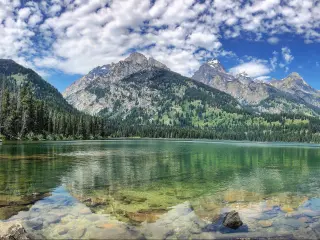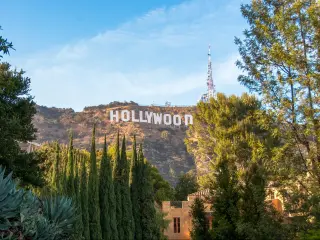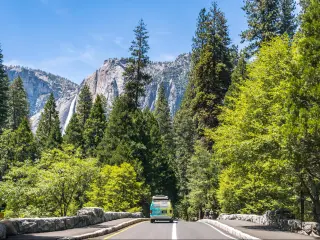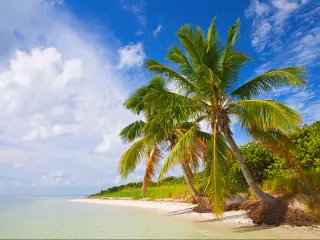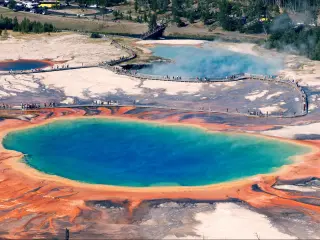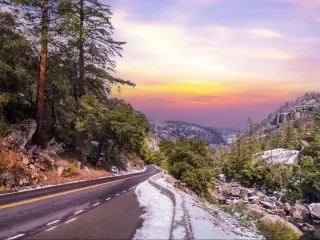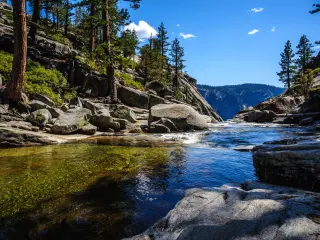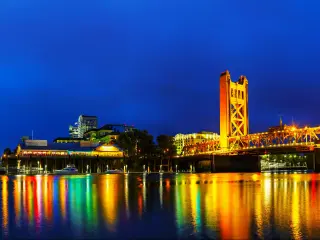Road trip from Yosemite to Death Valley
If you are looking for your next destination after visiting Yosemite, you are in luck because California is filled with amazing places to visit. The road trip from Yosemite to Death Valley offers a dramatic shift from the lush, towering landscapes to the stark beauty of Death Valley, with other amazing national parks on the way.
The 430-mile road trip from Yosemite to Death Valley will take 8 hours and 45 minutes to drive. On the way, you'll get to visit Mammoth Lakes, Fresno, Bakersfield, Lake Tahoe, Mono Lake, June Lake, Sequoia National Park and Kings Canyon National Park.
Get ready to journey through some of the most dramatic landscapes in the nation on this drive from Yosemite to Death Valley. Read on to learn more about our recommended routes, the best places to stop on the way, top things to see and do, and the best seasons to travel.
How to drive from Yosemite to Death Valley
The map below shows two great route options for your Yosemite to Death Valley road trip. Click on the star icons for headline details, and scroll down for much more information below.
* Always remember that drive times can be impacted by traffic, closures, weather and other conditions. It's best to double-check while planning and before starting out on your trip.
| Route | Distance | Driving Time |
|---|---|---|
| Sequoia National Park Route | 430 miles | 8 hours 45 minutes |
| Mammoth Lakes Route | 470 miles | 9 hours 10 minutes |
How far is Death Valley from Yosemite, and how long will the road trip take?
If you were to drive directly from Yosemite to Death Valley, the 350-mile journey would take you about 6 hours to complete. However, you'd miss out on the amazing sights and landmarks you could visit on the way.
Alternatively, the Sequoia National Park Route on a road trip from Yosemite to Death Valley takes approximately 8 hours and 45 minutes to complete, covering a distance of 430 miles.
The Mammoth Lakes Route is a slightly longer journey of about 9 hours and 10 minutes, spanning 470 miles.
With all the incredible natural sights, experiences, and charming towns along the way, we recommend taking 4-5 days to complete your journey. This will give you plenty of time to enjoy the majestic parks, serene lakes, and unique destinations you'll pass.
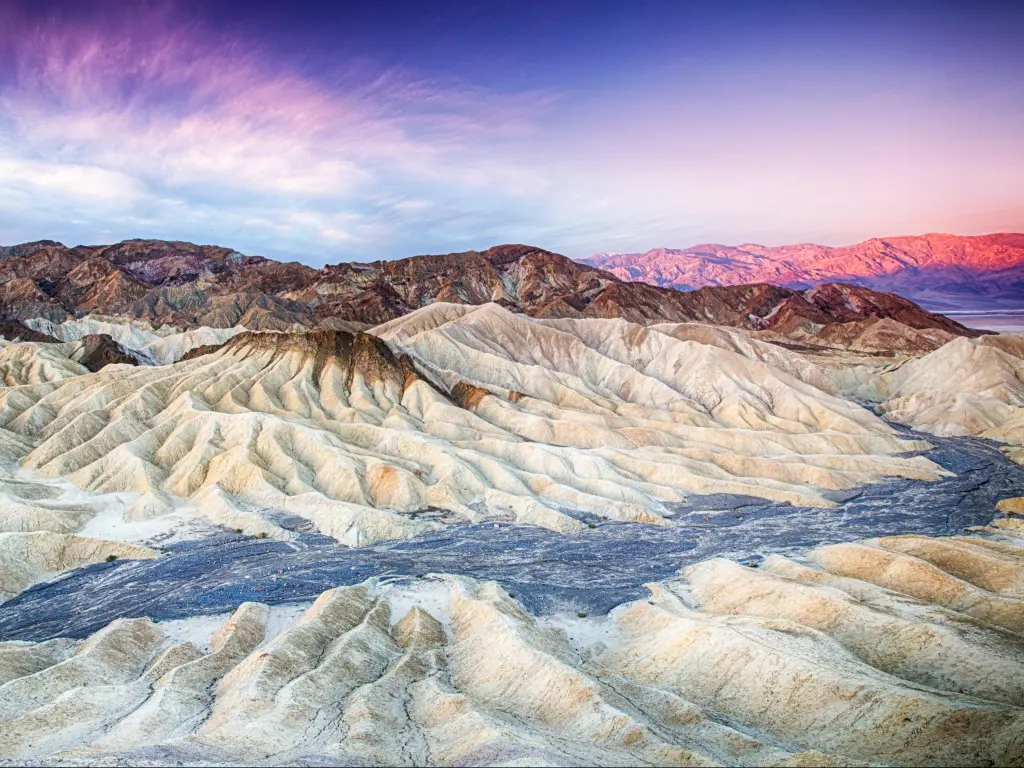
Best road trip route from Yosemite to Death Valley
While both the Sequoia National Park Route and the Mammoth Lakes Route offer plenty of natural beauty, they have their own unique highlights.
The Sequoia National Park Route kicks off with the untouched wilderness of Yosemite using the South Entrance to leave the national park. Then, it brings you up close to the world's largest trees in Sequoia National Park, including the awe-inspiring General Sherman Tree.
You will also get to visit Kings Canyon National Park on this route, which is an outdoor lover's dream.
Afterwards, you'll descend into Bakersfield, with its rolling valleys transitioning into the stark, barren desert approaching Death Valley. This route is perfect if you love natural wonders, lush forests, and arid deserts.
The Mammoth Lakes Route is a haven for mountain and lake lovers. This scenic route will first take you north to visit Lake Tahoe, and then dip south through stunning mountain passes, winding through the Eldorado and Inyo National Forests with the views of the Sierra Nevada.
This route has plenty of breathtaking views, especially near Mammoth Lakes, which is a paradise if you love hiking and skiing.
This route uses the Big Oak Flat Entrance to leave Yosemite National Park. If you'd like a shorter journey and are traveling during the warmer months, you can use the Tioga Pass Entrance to exit and head directly south to Death Valley without visiting Lake Tahoe.
Keep in mind that Tioga Pass Entrance closes in winter and plan accordingly. You can find detailed information on where the entrances of Yosemite National Park are in our detailed guide.
Once you are in Death Valley, you will be spoilt for choice when it comes to beautiful places to visit and landscapes to capture, either in your memory or in photographs. If you plan to do the latter, you can find our favorite photo spots in Death Valley here.
Sequoia National Park Route
As you leave Yosemite, use the South Entrance and take the journey south towards Fish Camp. Continuing on, you'll reach the Lewis Creek Trail Middle Trailhead, a perfect hiking spot to explore the forests.
Your route then leads you to Oakhurst, home to the Fresno Flats Historical Village and Park. Moving into the urban environment of Fresno, a stop at the Fresno Art Museum is well worth it.
From here, Kings Canyon National Park is a short drive away. After your visit, driving further south, you'll reach the beautiful views of Grant Grove Village and the Slick Rock Recreation Area before entering Sequoia National Park.
Spend some time exploring Sequoia National Park. Here, you'll see the iconic General Sherman Tree and several other magnificent groves of sequoia trees.
Head back south on to Bakersfield. After enjoying the city's museums and cultural sights, continue on through Tehachapi towards Panamint Springs. You'll soon transition from farmland to endless desert, all the way until Death Valley National Park.
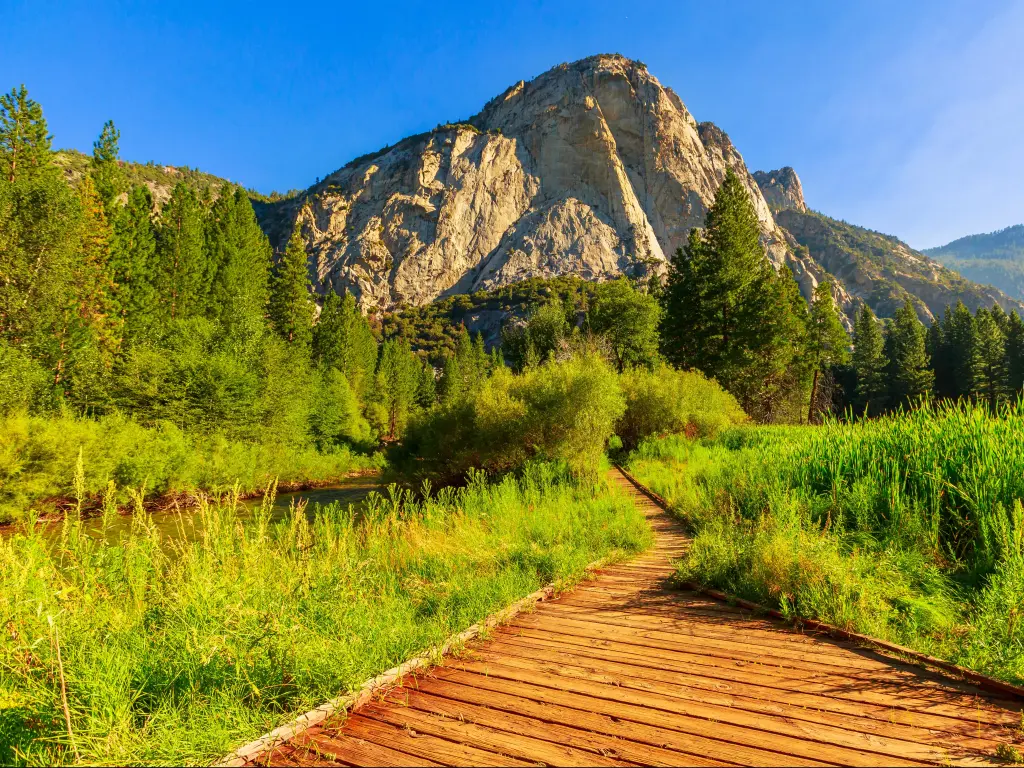
Mammoth Lakes Route (via Lake Tahoe)
Beginning your adventure from Yosemite National Park, the Mammoth Lakes Route takes you north on CA-120. Proceeding towards Groveland, the Groveland Yosemite Gateway Museum is worth seeing to learn more about the area's Gold Rush history.
Driving north through San Andreas, Jackson and Placerville, you'll eventually reach Lake Tahoe. Here, you can enjoy the crystal clear lake and plentiful boating opportunities.
After your visit to Lake Tahoe, head south on US-95. Navigating along the eastern Sierra, Mono Lake Vista Point is worth a visit before reaching Gibbs Canyon and June Lake.
Arriving in Mammoth Lakes, the Mammoth Museum at the Hayden Cabin is worth a stop to learn about the area's local history. From beautiful Mammoth Lakes, head to Lake Crowley. The path then takes a historical turn at Manzanar National Historic Site.
Soon, you'll arrive in the historical town of Lone Pine before descending into the dramatic landscapes of Death Valley National Park.
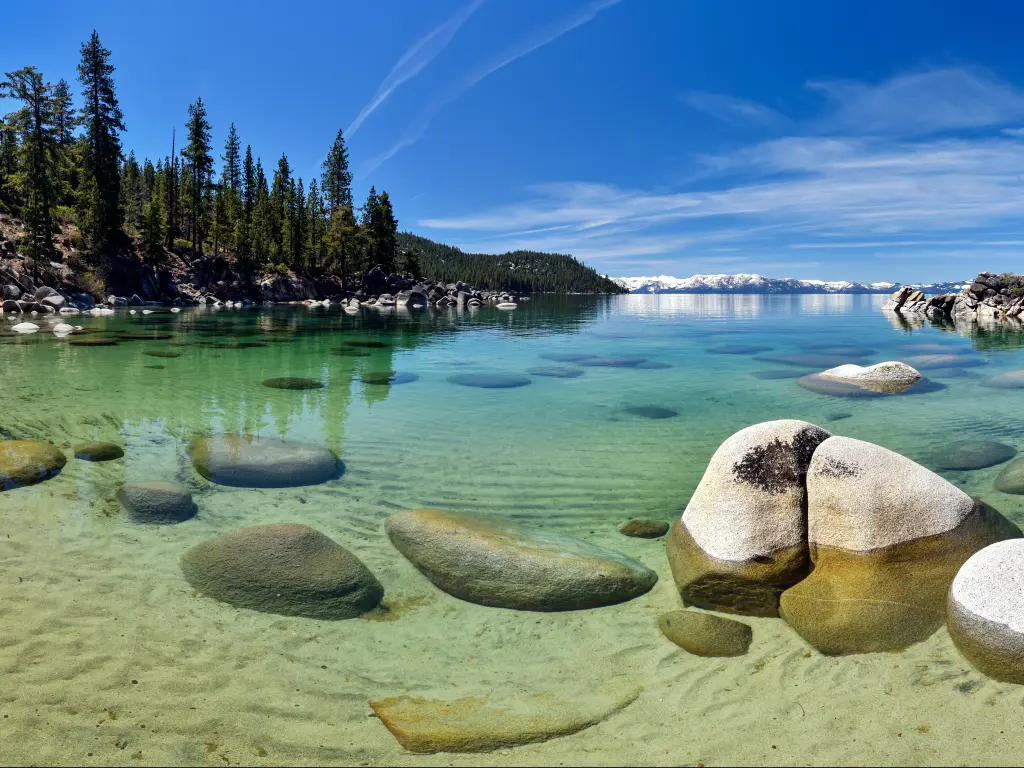
Best places to stop between Yosemite and Death Valley
There's so much to see and do between Yosemite and Death Valley that we recommend staying in one of the memorable destinations below. This way, you'll get to experience all this wonderful part of the USA offers.
Under the shadow of giant trees in Sequoia National Park
Sequoia National Park is located 3 hours and 50 minutes into the journey on the Sequoia National Park Route. It's famous for its towering trees, among are General Sherman Tree and the quirky Tunnel Log tree that you can drive through.
Sequoia National Park is also home to the views of Moro Rock, offering breathtaking vistas of the Great Western Divide, presenting a not-to-be-missed climb that rewards with awe-inspiring landscapes.
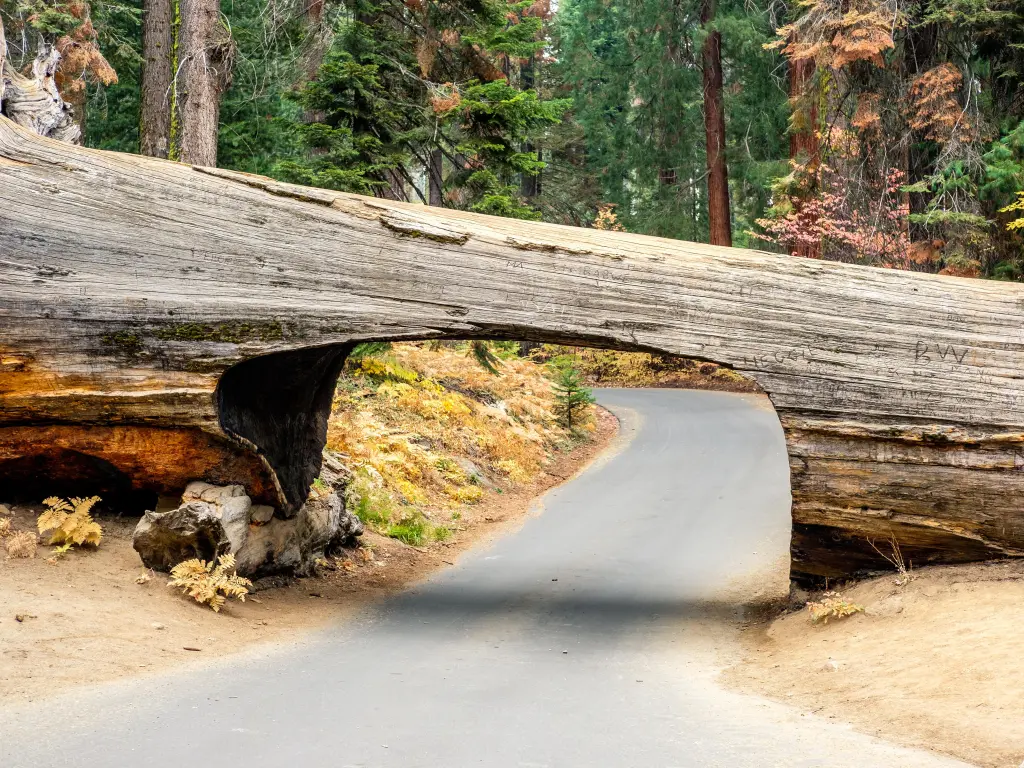
While you're here, we recommend staying in the heart of these ancient forests at the Parks Inn Bed and Breakfast at the nearby Lemon Cove. This charming bed and breakfast will be the perfect gateway to the natural wonders of Sequoia National Park.
Rooms at the Parks Inn Bed and Breakfast have balconies that provide breathtaking mountain vistas, and once ready to explore, you'll be treated to a delicious daily breakfast featuring fresh local produce, baked goods, and more, giving you the perfect start to your day.
Near your stay, the Kaweah Recreation Area, only a 5-minute drive away, is a splendid backdrop for outdoor activities, while the Slick Rock Recreation Area, an 11-minute drive from the bed-and-breakfast, invites you to explore and relax in its refreshing water spots.
Stunning mountain views in Mammoth Lakes
Mammoth Lakes is the perfect pause on the Mammoth Lakes Route, around 6 hours and 30 minutes into the journey. Renowned for its breathtaking alpine scenery, Mammoth Lakes is a hub of crystal-clear lakes, mountains, and forests, making it a year-round destination for outdoor lovers, whether you love skiing in winter or hiking during the summer.
Among the must-visit attractions are the Mammoth Mountain Ski Area and the Devils Postpile National Monument, known for its fascinating rock formations.
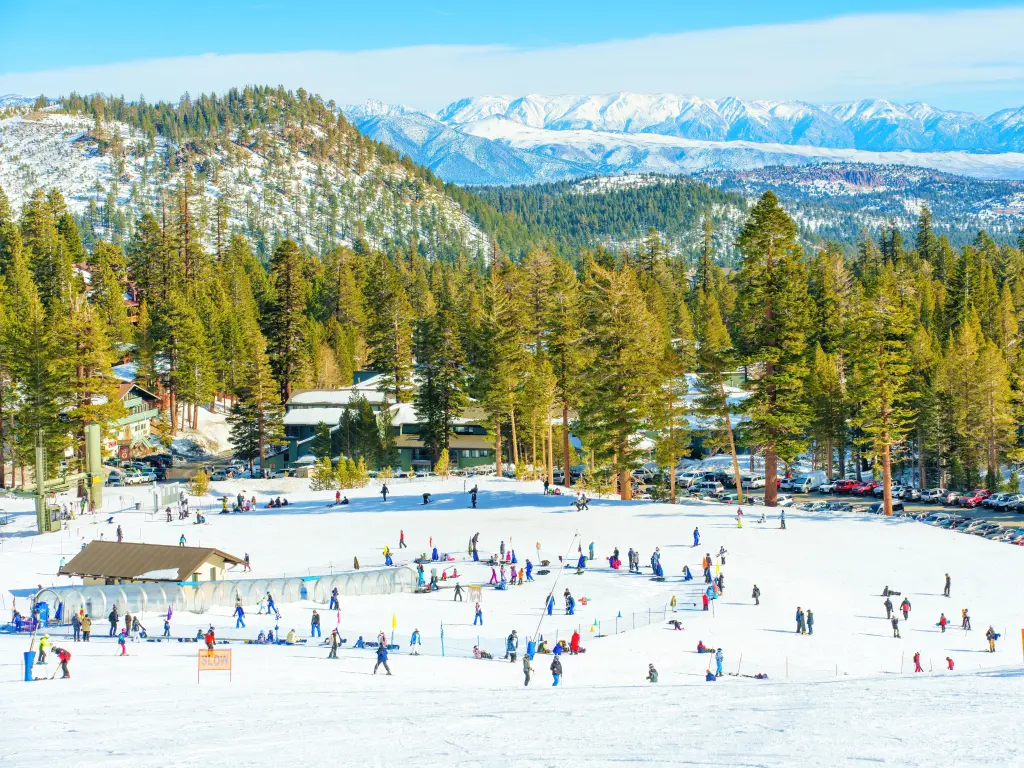
When you arrive at Mammoth Lakes, we recommend staying at the luxurious Westin Monache Resort Mammoth. Each room is equipped with a cozy fireplace to warm the chilly mountain evenings. If you're staying on the higher floors, you'll be treated to spectacular views of the surrounding landscapes.
The Westin Monache Resort also features a gourmet restaurant with delicious meals, a heated outdoor pool for a leisurely swim, and two hot tubs for unwinding after a day of exploration.
You'll only be 150 yards away from the Village Gondola, providing easy access to the slopes of Mammoth Mountain. The Earthquake Fault Hiking Area, located about 1.5 miles from the hotel, offers a unique adventure into the region's fascinating geological history.
Where to stay when you reach Death Valley
Death Valley is famous for its stark desert beauty, holding the title of one of the hottest places on Earth. This extreme environment is also home to North America's lowest point, the Badwater Basin, and has unique geological formations like the Artist's Palette.
Death Valley served as a dramatic filming location for 'Star Wars - A New Hope,' with its otherworldly landscapes. The National Park Service even offers a guided driving audio tour to explore these iconic Star Wars filming locations.
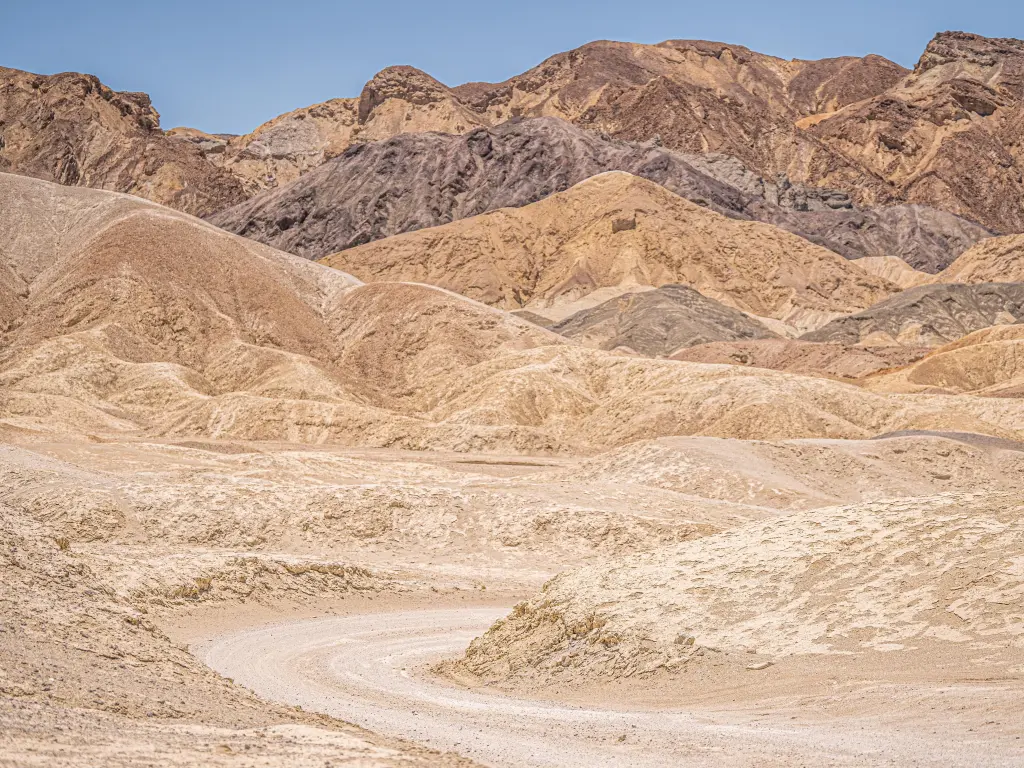
Nestled in this remarkable and challenging landscape is The Inn at Death Valley, a luxurious oasis offering a serene retreat in the heart of Death Valley National Park.
Ideally located between the Furnace Creek Visitor Center and the breathtaking Zabriskie Point, this hotel provides an amazing escape close to the park's most famous landmarks. You can choose rooms that offer stunning views of the desert expanses or the majestic Panamint Mountains.
The Inn also offers a range of amenities designed to enhance your stay. A spring-fed outdoor pool, sauna, two tennis courts, a basketball court, an exercise room, and seasonal massage therapies promise relaxation and rejuvenation after a day of exploration.
Things to see on a road trip from Yosemite to Death Valley
You'll get to explore endless highlights along both routes on a Yosemite to Death Valley road trip. To help you plan your ultimate California adventure, we've included our top destinations below.
Sequoia National Park Route
- Yosemite Mountain Sugar Pine Railroad - Ride the historic steam trains through the scenic Sierra National Forest, offering a glimpse into the logging history of the early 1900s. This family-friendly attraction includes narrated tours that explore the rich heritage of the region.
- Lewis Creek Trail Middle Trailhead - A gateway to the beauty of the Sierra Nevada, this trail offers moderate hikes with views of waterfalls and lush forest, perfect for nature lovers and photography enthusiasts.
- Fresno Flats Historical Village and Park - Step back in time at this outdoor museum in Oakhurst, showcasing 19th-century life with restored buildings and artifacts from the area's pioneer days.
- Fresno Art Museum - A cultural hub in the heart of Fresno, this museum features a diverse collection of contemporary and modern art and exhibitions celebrating local and international artists. It's a space for inspiration and creativity.
- Fresno County Blossom Trail - Celebrate the arrival of spring with a drive through this trail, where orchards burst into colorful blooms of peaches, plums, almonds, and more. It's an annual spectacle that attracts photographers and nature enthusiasts.
- Grant Grove Village - Located in Kings Canyon National Park, this village serves as a starting point for exploration, offering amenities, lodging, and access to the towering sequoias, including the General Grant Tree.
- Slick Rock Recreation Area - A popular spot for camping, fishing, and swimming, located in the foothills of the Sierra Nevada. Its smooth granite formations and the nearby Kaweah River make it a picturesque escape into nature.
- Sequoia National Park - Home to some of the largest trees on earth, this park offers a breathtaking experience with its giant sequoias, rugged landscapes, and vast wilderness areas waiting to be explored.
- General Sherman Tree - The world's largest tree by volume, this giant sequoia stands as a natural monument within Sequoia National Park, drawing visitors from around the globe to marvel at its size and age.
- Kings Canyon National Park - This detour leads through a landscape of deep valleys, towering trees, and rugged terrain, offering hiking trails, waterfalls, and scenic overlooks that showcase the raw beauty of the Sierra Nevada.
- Kern County Museum - Explore the rich history of Kern County through exhibits that include pioneer settlements, oil industry developments, and cultural artifacts, providing a comprehensive view of the region's past.
- Buck Owens' Crystal Palace - A music venue and museum dedicated to the country music legend Buck Owens, offering live music, dining, and a collection of memorabilia that celebrates the Bakersfield Sound.
- Tehachapi Heritage League Museum - This museum preserves the history of Tehachapi and the surrounding areas with exhibits on Native American cultures, railroad history, and the local community's development.
- Maturango Museum - Located in Ridgecrest, this museum focuses on the natural and cultural history of the Upper Mojave Desert, featuring art exhibits, geological displays, and information on the petroglyphs of the Coso Range.
- Panamint Springs - A small, rustic resort in Death Valley National Park offering lodging, camping, and dining, serving as a peaceful oasis in the midst of the desert's stark beauty. Don't forget to check the nearby Darwin Falls out while here.
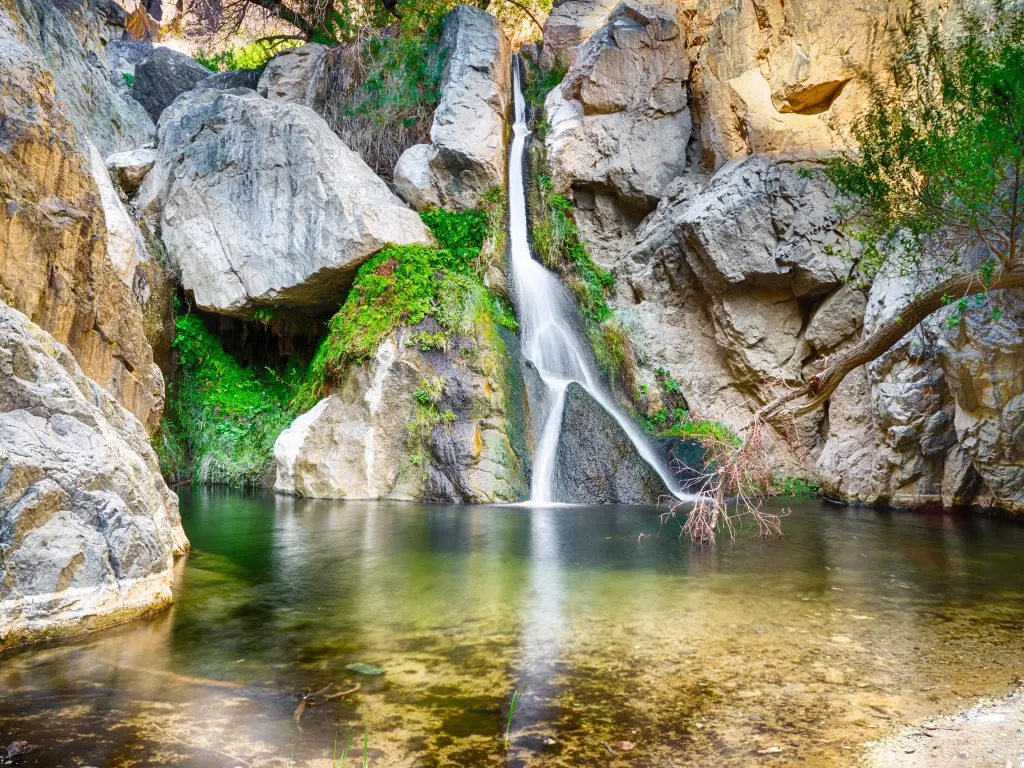
Mammoth Lakes Route
- Rainbow Pool - A natural swimming hole near Groveland on the way to Yosemite, offering clear, cool waters perfect for a refreshing dip in a picturesque setting.
- Groveland Yosemite Gateway Museum - This museum highlights the history of Groveland and the Yosemite area, with exhibits on the Gold Rush, local Native American cultures, and the natural history of the region.
- Groveland - A charming historic town on the doorstep of Yosemite National Park, offering a glimpse into California's gold rush era with its preserved buildings and welcoming community.
- Railtown 1897 State Historic Park - Experience the golden age of railroading at this park, with its operational steam trains, historic roundhouse, and tours that delve into the film and television legacy of the "Movie Railroad."
- New Melones Lake - An expansive reservoir offering a plethora of outdoor activities such as boating, fishing, hiking, and camping, surrounded by rolling hills and open skies.
- Calaveras Big Trees State Park - Wander among ancient giant sequoias in this park, which preserves two groves of these magnificent trees, offering trails that meander through the forest and provide a tranquil retreat.
- Pickett's Junction - A key crossroads in the Sierra Nevada, offering access to a variety of scenic routes and outdoor adventures in the surrounding mountains and valleys.
- Lake Tahoe - Renowned for its clear blue waters and surrounding mountain peaks, Lake Tahoe offers year-round recreation, from skiing and snowboarding in winter to hiking, biking, and water sports in summer.
- Mono Lake Vista Point - Offers panoramic views of Mono Lake, an ancient saline lake known for its unique tufa towers, birdlife, and surreal landscapes, making it a must-see destination.
- Gibbs Canyon - A scenic spot known for its rugged beauty, offering outdoor enthusiasts a place to explore, hike, and enjoy the serene mountain environment.
- June Lake - A picturesque mountain lake, known for its clear waters, fishing, and the quaint village that offers a cozy retreat in the Eastern Sierra.
- Mammoth Museum at the Hayden Cabin - This museum, set in a historic log cabin, showcases the history of Mammoth Lakes with artifacts, photographs, and exhibits on local mining, skiing, and indigenous cultures.
- Crowley Lake - A popular fishing and recreational destination, known for its unique geological formations along the shoreline and a wide range of water activities.
- Manzanar National Historic Site - Preserves the site of one of the World War II internment camps for Japanese Americans, offering a sobering look at this chapter of American history through exhibits and guided tours.
- Museum of Western Film History - Celebrates the rich legacy of Western films with a collection of memorabilia, movie props, and exhibits, located in a town that has served as a backdrop for countless movies and TV shows.
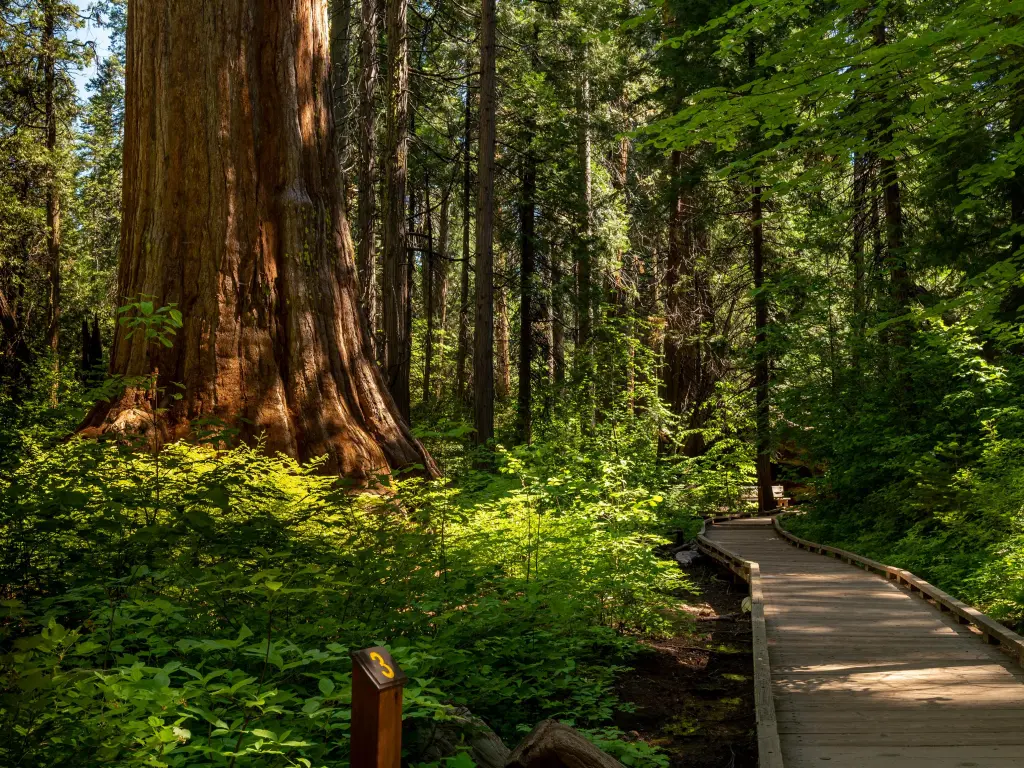
Best time to go on a road trip from Yosemite to Death Valley
A road trip from Yosemite to Death Valley will be full of fun and adventure, no matter which season you travel. However, each time of year has its own charms and challenges.
In summer, while Yosemite and Sequoia National Park enjoy milder temperatures perfect for exploring, Death Valley has extreme heat, often surpassing 100-110 degrees Fahrenheit.
It's crucial to carry plenty of water and schedule hikes for cooler times of the day in Death Valley, whereas the cooler, shaded paths of Sequoia and Yosemite stay relatively cool.
Winter transforms Yosemite and Sequoia into snowy wonderlands, causing potential road closures and the need for snow chains. Keep in mind that Tioga Pass Entrance closes down in winter, so plan accordingly.
Death Valley, however, is slightly warmer, with daytime temperatures ranging from 40-70 degrees Fahrenheit. Winter is the perfect time to explore the arid surroundings without the harsh temperatures.
Summer cultural events like Fresno Greek Fest and Wasteland Weekend in September on the Sequoia Route or Lake Tahoe Reggae Fest in August are well worth a visit.
The shoulder seasons are also perfect times to visit, with mild weather along both routes and fewer tourists. In the fall, don't miss the California Dark Sky Festival in October on the Mammoth Lakes Route.
Upon reaching Death Valley in spring, the Death Valley Dark Sky Festival in March makes this season the perfect time to visit. Plus, you may get the chance to see Death Valley's famous spring superblooms.

